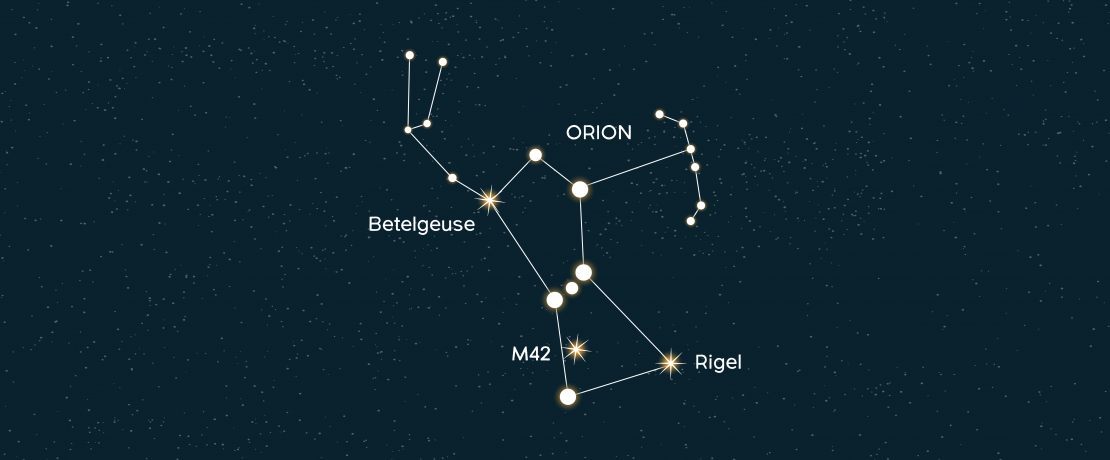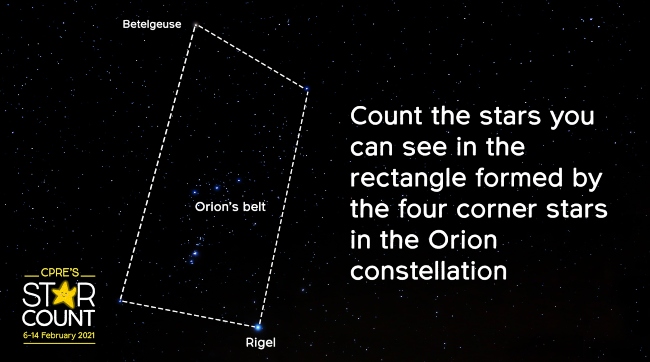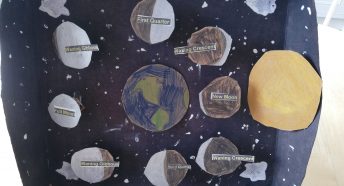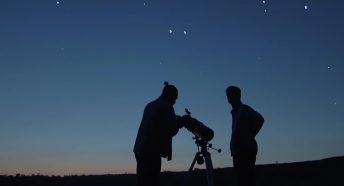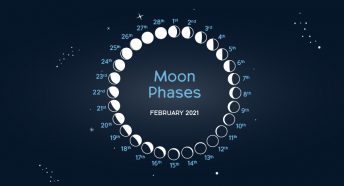Looking at Orion in the sky
As part of our annual programme to measure light pollution, we ask people to go into their gardens, or another outside space at home, and count the stars they can see in the Orion Constellation. There are many reasons why it is important to be able to look up into a starry sky, so we need your help to measure the effect that light is having on our views of the galaxy.
When we look at a clear night sky, no matter where in the world we are the chances are that we can see the Orion Constellation. It’s one of the most recognisable and easy to find constellations in the sky, visible throughout the world. The constellation is named after Orion, the giant huntsman in Greek mythology, who was killed by a scorpion and placed in the sky by the King of the Gods, Zeus.
Finding Orion on a clear night is usually quite easy. Look towards the south-west and find three bright stars which are quite close together, forming the line of Orion’s Belt. Although these three stars, Zeta, Epsilon, and Delta, look to us to be the same size and distance away, there are actually huge differences in the distances between each of them and Earth.
Once you’ve found the Belt, you’ll quickly be able to find some of the other stars in the constellation. You should be able to see his shield, his head, and his club. To visualise the whole constellation in your mind, imagine that Orion is facing away from you. Above and below the belt four bright stars form a rectangle – these are good points from which to navigate when looking for the other parts of the constellation.
To locate Orion’s sword follow a line directly south the middle star in the Belt to find a column of three stars: the top two may appear smaller than the third. On a very clear night, with binoculars or a telescope, you may even be able to see some of the nebulae that form part of the sword.
If you now draw a line from the third star, the one on the right of his Belt, north north-west, you’ll see the bright star Bellatrix, which is roughly where Orion’s right shoulder would be. Orion’s shield can be found almost west of Bellatrix, and is a line of nine stars running top to bottom.
From Bellatrix, look to the west and you’ll find Betelgeuse at Orion’s left shoulder. Betelgeuse is a red supergiant star – it’s almost 1,000 times bigger than our own Sun. Looking north from Betelgeuse you’ll see the stars that make up Orion’s arm and his club.
The two remaining clearly visible stars are Rigel (south-east) and Saiph (south-west). These two stars form Orion’s knees. Rigel is the brightest star in the Orion constellation, and Saiph is a blue-white supergiant at the south-east corner of Orion’s hourglass shape.
For a bonus point, see if you can find Sirius. Follow a line from Orion’s Belt, starting at Delta towards Zeta, and Sirius should be easy to spot – it’s the brightest star in the sky.
We have created a graphic to help you identify where to count your stars. We want to know how many you can see just using your eyes within this space, from the comfort of your home.
